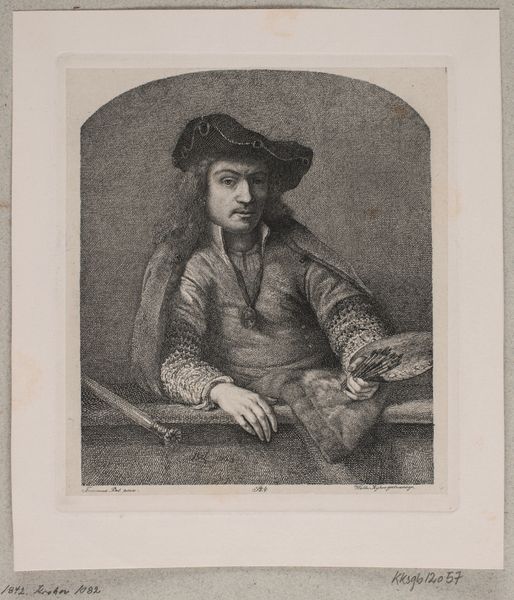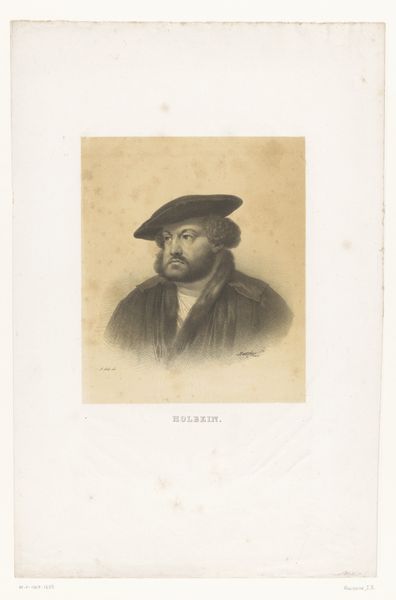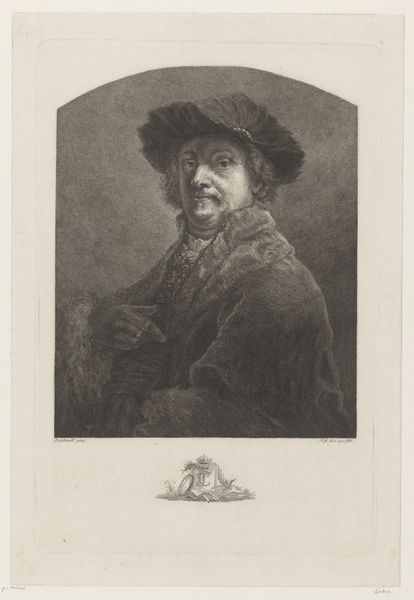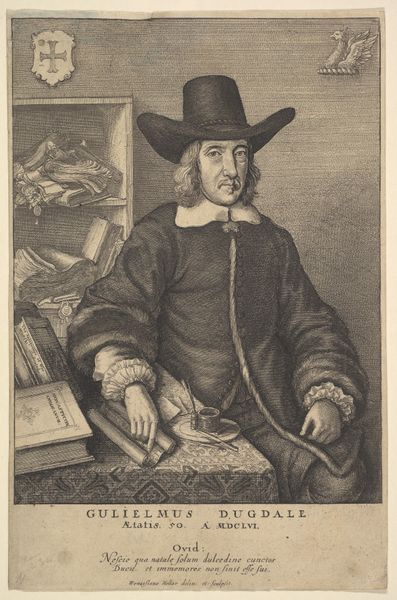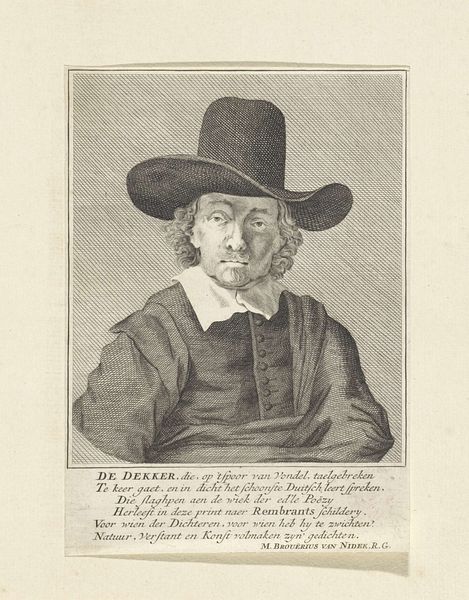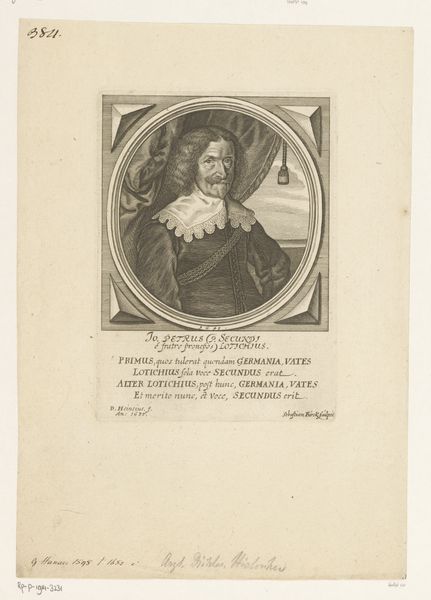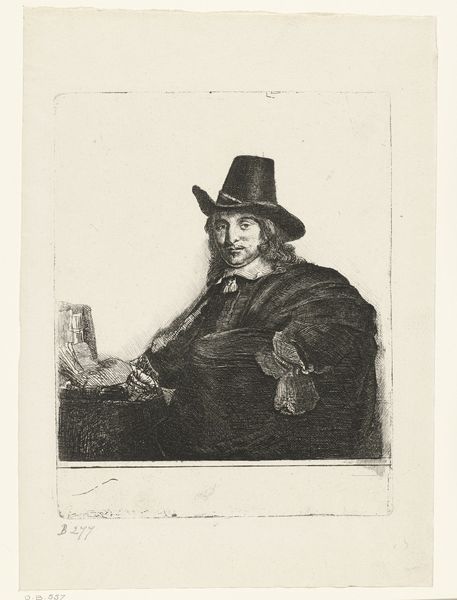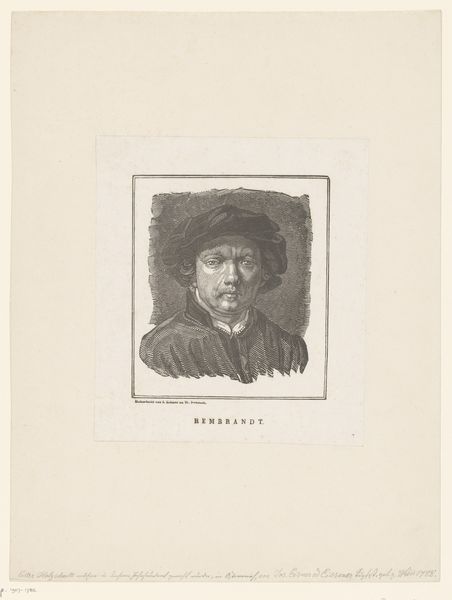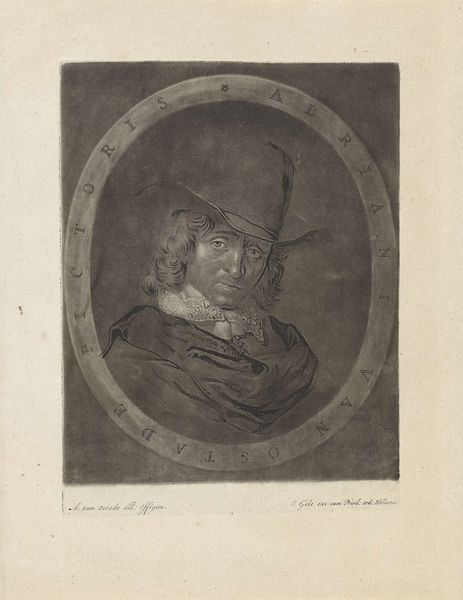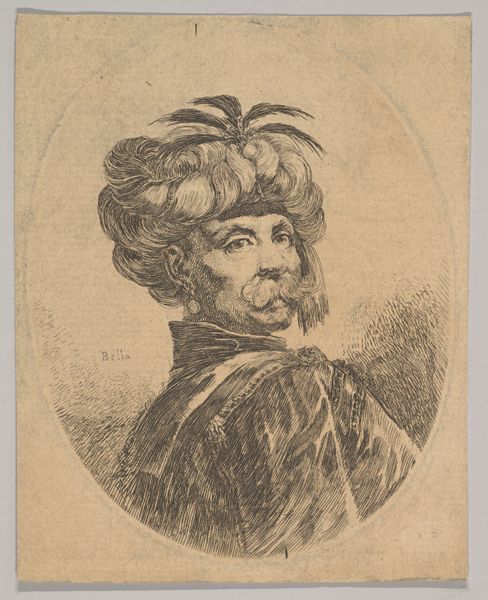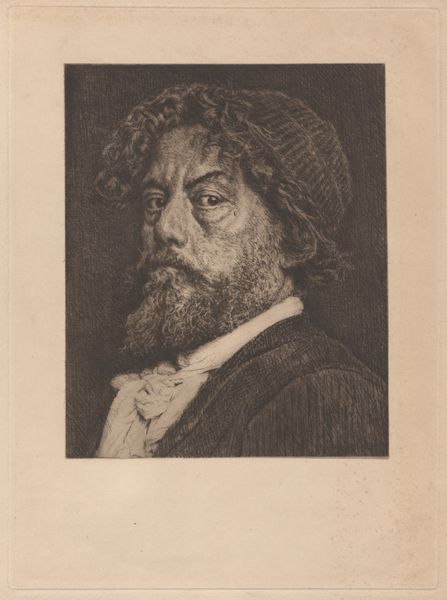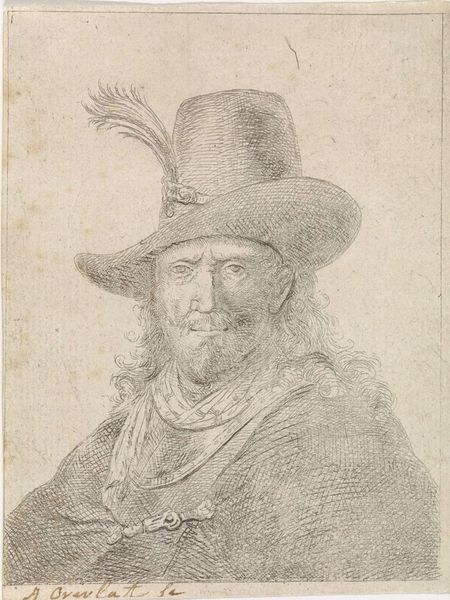
Dimensions: height 192 mm, width 150 mm
Copyright: Rijks Museum: Open Domain
Curator: Welcome. Before us is an 1817 engraving, titled "Portret van Leonaert Bramer," crafted by James Girtin. Editor: My first impression is one of muted intensity. The hatching and cross-hatching create a dynamic play of light and shadow. There's a tangible seriousness in his expression, and the ornate border sets off the portrait well. Curator: The medium is fascinating. Girtin's choice of engraving connects this work to a rich history of printmaking, allowing for wider distribution and democratizing access to art, moving it beyond the elite. Note the contrast with the baroque subject. Editor: Precisely, the lines themselves become a language. Look at the textures he creates. The hat seems heavier, more solid, than the softer curls of Bramer’s hair. The way Girtin renders the collar adds to the sense of quiet dignity. Curator: Girtin lived during a period of immense social change, when artistic production became industrialized, so there is perhaps a commentary here on individual labor. These portrait engravings became widely circulated and consumed within British society at this time, making Bramer recognizable to a wider audience. Editor: Yes, but observe the skill! The subtle modulation of light, especially around the face, conveys character, almost revealing Bramer’s thoughts through the modulation of line. The way the clothing is described with these intricate cross-hatching effects gives it texture. Curator: Consider that Bramer painted history paintings; in his day he might be viewed as capturing narratives, morals, political ideas. Think about who was being depicted through these engravings, and how it contributes to a broader historical narrative. Editor: This engraving is an eloquent study in black and white, where form and meaning become indelibly entwined. The very act of translating a painted portrait into an engraved print speaks to both loss and gain. It preserves but also interprets. Curator: This work reflects on history and speaks about accessibility, dissemination, and the changing nature of artistic production. Editor: The meticulous detail invites us to consider how a portrait, even when rendered in monochrome, captures the essence of a subject and preserves it for future reflection.
Comments
No comments
Be the first to comment and join the conversation on the ultimate creative platform.
